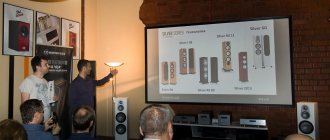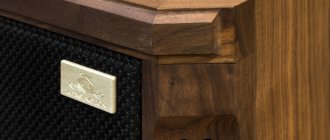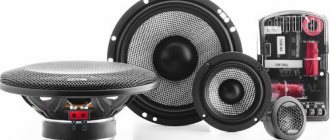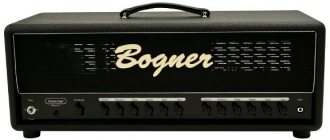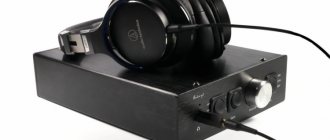The Monitor Audio acoustics catalog has included the Bronze, Silver, Gold and Platinum series for decades. Each of them has its fans and opponents, and for obvious reasons, the older the acoustics, the more listeners recognize it as successful. Even critics of the younger series, in the heat of argument, sometimes cite Gold as an example of correct acoustics.
The first generation of Monitor Audio Gold acoustics was released in 1998 and at that time headed the brand line. Today's generation, the fourth in a row, has already ceased to occupy the position of a High-End flagship. The Gold line has shifted to the level of a pre-top model, giving way to Platinum. However, having lost its top position, the Gold series has gained a more advantageous position. The latest and most expensive technologies, one might say, are “tested” in Platinum models, while Gold receives already proven solutions. And, of course, the price of the line is lower. The continuity of technology can be seen in the shape of the case, in the finishing, and in the design of the emitters. Let's start with the latter.
Commitment to metal
At the core of Monitor Audio's consistent sonic signature is the company's equally consistent commitment to proprietary C-CAM construction material. The diffusers of emitters of all series from Bronze to Platinum are made from it, so, by the way, models of different lines combine well within a home theater.
Home theater based on Monitor Audio Gold acoustics
The composition of the C-CAM material is encrypted in the name itself: Ceramic-Coated Aluminum|Magnesium. The diffuser is made of aluminum-magnesium alloy and has a ceramic coating consisting of aluminum oxide on the outside. This coating has significantly higher hardness than most materials traditionally used to make membranes, and even a thin coating of several tens of microns provides C-CAM speakers with unique properties.
In speakers with cones made of less rigid materials or having a less dense and hard surface, the signal peaks are blurred because the cone material acts as a shock absorber. The high-hardness ceramic surface possessed by C-CAM diffusers makes it possible to accurately work out the moment of transition of mechanical energy into vibration of the air mass. In fact, this is expressed in better microdynamics, higher detail and better transmission of sharp and fast signals, a clear attack, which, in essence, is the timbre color of the instrument.
Floor-standing speakers Monitor Audio Gold 300
But a hard surface alone is, of course, not enough. It is necessary to minimize the mass of the diffuser while ensuring the maximum possible rigidity at the macro level - for the entire moving structure. The use of C-CAM material is, in principle, the main solution to both problems. Aluminum and magnesium are lightweight metals, and their alloy makes it possible to obtain a thin, light and fairly rigid structure. But if everything was limited only by materials, then Monitor Audio would have shown their best speaker back in the eighties and since then they would not have moved a millimeter in their work.
An equally important role in the design of the emitter, in addition to the material, is played by the shape and design of the diffuser, and it is in this direction that Monitor Audio developers have been improving their skills for several decades. In the current Silver and Bronze versions, the midrange/bass diffusers received a concave spherical profile, which made it possible to obtain maximum rigidity while using a minimum amount of material, that is, with a minimum weight of the structure.
The diffusers of the previous Gold version also had the appearance of a concave bowl, but in addition they had radial stiffeners. This solution is, in principle, effective, since rigidity was achieved without increasing mass, but there are also some disadvantages. The problem is that the stiffeners change the relief of the membrane quite strongly, which can have a negative effect on sound dispersion.
New shape of the speaker membrane of the Gold series of Monitor Audio acoustics
In the new version, the Gold series speakers are made using a different technology. The profile in the form of a concave hemisphere has been preserved, and the stiffening ribs have been replaced by small dents, like on a golf ball. They do not significantly change the surface relief of the diffuser, but at the same time provide the necessary degree of increase in structural rigidity.
Another difference between the new Gold mid/bass drivers is the increased power of the magnetic system and an extended voice coil. As a result, the load capacity of the speaker has become higher, which means the upper limit of undistorted power has increased. The voice coil is attached directly to the diffuser, its large surface area and high thermal conductivity ensure efficient cooling of the entire system.
Ⓜ Acoustics Monitor Audio
The company was founded in 1972 by Mo Iqbal. Monitor Audio began life in a factory in Teversham, near Cambridge, England. In 1976, Monitor Audio moved its production process to a factory in the heart of Essex. In 2000, it moved to a larger facility in nearby Rayleigh, where it remains. In 2004, Monitor Audio moved to China. In 2016, Monitor Audio acquired British hi-fi manufacturer Roksan. In 2022, Monitor Audio acquired British hi-fi furniture manufacturer Blok.
1977 - MA7 acoustics 1979 - the first direct drive turntable ET500 1985 - transition to the production of metal tweeters and drivers. Acoustics R852MD with met. tweeter 1986 - the first tweeters of the Gold series in the R352MD acoustics. The gold dome tweeter is made of ceramic-coated aluminum-magnesium alloy, anodized with a specific thickness of gold for ideal rigidity and damping characteristics. The new design moves the first-order frequency cut above 35 kHz, providing linear response beyond the audible limit, matching the wide bandwidth available for HD music and movie sound formats. 1989 - The first "ceramic multi-layer metal cone" is developed, inspiring the development of modern C-CAM technology. Acoustics Studio 10 with this driver. 1991 - Aluminium/magnesium with ceramic coating in all types of drivers (C-CAM driver) 1995 - Rebranded with the slogan - “As close as possible”. Acoustics Studio 20SE 1998 - website launch 1999 - Acoustics Silver i 2000 series - speakers received Rigid Surface Technology (RST) tapered profile inspired by the Japanese art of origami, which demonstrates how very light material (for example, paper) can be strengthened and made more rigid, making small and precise folds on its surface. Monitor Audio applied this principle to the development of the CAM/RST cones for the GX and RX series. 2003 - MMP (Metal Matrix Polymer) drivers introduced in the Radius line 2005 - Silver RS Series 2006 - Gold Signature (GS) Series, Bronze BR Series 2007 - Platinum Series 2008 - Radius HD Series 2009 - new slogan - "Design for Sound" 2012 — Shadow Series 2013 — Silver Series (5th generation) 2014 — Gold Series (4th generation) 2015 — Bronze Series 2016 — Platinum II Series, acquisition of Roksan 2022 — Silver Series (6th generation) 2022 — Monitor Series, installation amplifiers 2022 — Studio Series 2022 - Gold Series (5th generation) 2022 - Bronze Series 2021 - Silver Series (7th generation)
gold ribbon
Acoustics with tweeters, the membrane of which is made of a C-CAM alloy with a small gold content, appeared in the Monitor Audio assortment in the second half of the eighties, that is, almost ten years before the appearance of the Gold series. It was probably the appearance of the top tweeters that gave marketers the idea of naming the series after metals. In the current line, even the younger Bronze series has recognizable golden tweeters. However, the Gold series is equipped with more complex ribbon tweeters, the design of which is borrowed from the older Platinum model.
Floor-standing speakers Monitor Audio Gold 200
There are no special secrets in ribbon tweeters from Monitor Audio. Their design is absolutely traditional: between two permanent magnets there is a metal membrane that simultaneously performs the function of a diffuser and a voice coil. When a signal is received from the amplifier, the membrane vibrates, creating sound waves in the audible frequency range. Compared to traditional tweeters, the ribbon emitter has a clear advantage due to the significantly lower mass of the moving system. With the same effective area, the tape is lighter and therefore provides better detail, a wider frequency range, and a lower level of distortion. If we compare with traditional ribbon tweeters, the HF emitter from Monitor Audio has only one fundamental difference - the C-CAM material used to produce the main structural element. The C-CAM alloy membrane is lighter and stiffer than any other, which allows you to improve all the main parameters.
Monitor Audio Gold 200 ribbon tweeter
The Gold and Platinum tweeters fundamentally differ from each other in the upper limit of the frequency range of 60 and 100 kHz. It is not difficult to see that the characteristics of the Gold tweeter are already sufficient to meet Hi-Res Audio standards and fully reproduce any other HD audio format. Those who do not hear sounds above 20 kHz or do not have recordings containing them in sufficient quantities should be pleased by the fact that distortions, resonances and other problems that are inevitably present at the edges of the frequency response of any emitter, in this case are taken far beyond the limit of what is actually reproduced by it frequency segment.
Bookshelf speakers Monitor Audio Gold 50 on a branded Gold Stands
The matching of speakers in Gold acoustics is ensured by crossovers assembled using audiophile components. They include air core coils and polypropylene capacitors, all elements that are recognized as the best in terms of sound. In addition, the internal wiring is made with proprietary silver-plated Pureflow cable, which has a positive effect on the sound, especially in the high frequencies.



